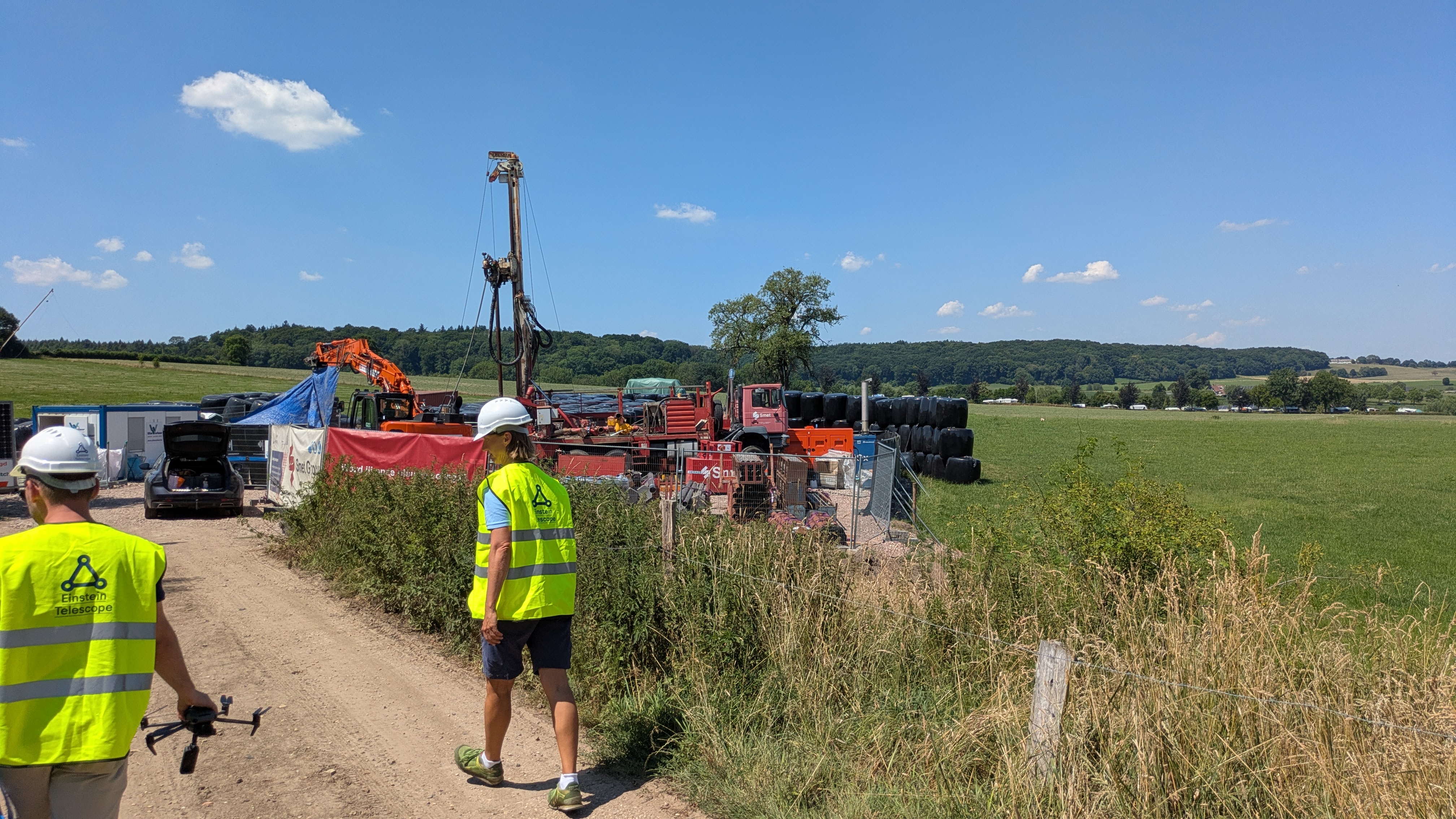Drilling campaign 2025
The second drilling campaign for the Einstein Telescope is also intended to provide a better picture of the deeper soil layers down to an average depth of 300-350 metres, to monitor environmental noise and to map underground water flows. This second drilling campaign will be carried out in the spring, summer and autumn of 2025.

These drillings will provide a more complete picture of the geology throughout the search area. This is necessary in order to ultimately determine where the underground telescope can be built in a triangular shape with arms of 10 kilometres.
This second campaign involves five drillings. As an extension of the first drilling campaign in 2024, an additional drilling in Welkenraedt (near Hoof) in Wallonia has now been added in 2025.
Locations
The locations for the second drilling campaign have not yet all been determined. The first two drillings have been decided, however. These involve one drilling in Beusdael near Sippenaeken in the Walloon municipality of Plombières. The second drilling will follow in the municipality of Herve near Julémont/Asse. Based on the initial results of these two drillings, the Einstein Telescope’s geological team will determine the other locations.
Sensors
At three drill sites, the geologists will place sensors at the bottom of the borehole. These sensors measure noise from the surrounding area. Depending on the intensity of this ambient noise, for example from railways or industry, it can interfere with the operation of the Einstein Telescope. The other drill sites will focus on hydrogeology, with the main aim being to obtain information about underground water flows.
Duration
A drilling operation takes an average of ten to fourteen weeks, including setting up and dismantling the sites. Interested parties will be kept informed of developments via the communication channels of the Einstein Telescope EMR project office and those of the municipalities where drilling is taking place. Residents living near drilling sites will also receive an information leaflet in their letterbox. Depending on demand, an information or walk-in meeting will be organised. The project office is also planning a viewing opportunity for interested parties during the drilling.
Experienced drilling company
Following a tender process, the contract for this second drilling campaign was awarded to the Flemish company Smet Group from Dessel. The company has extensive expertise in this field and has also carried out previous drilling work for the Einstein Telescope. The tender agreement also stipulates that nitrogen emissions from drilling powered by fossil fuels must be captured and neutralised.

Previous drilling campaign
The first drilling campaign in 2024 consisted of 11 deep boreholes. Based on the initial and preliminary analyses of these, it was announced during the ministerial conference in Kerkrade in October 2024 that the deeper soil is suitable for the construction of the Einstein Telescope. The results of other above-ground research had not yet been incorporated into this announcement. This second series of drillings and seismic research should further elaborate and confirm this preliminary conclusion.

Communication and viewings
Information meetings have been held for residents of Plombières, Aubel, Gemmenich, Voeren, Vaals and Epen. Furthermore, ‘viewings’ will be organised where interested parties can get on-the-spot information about the work.